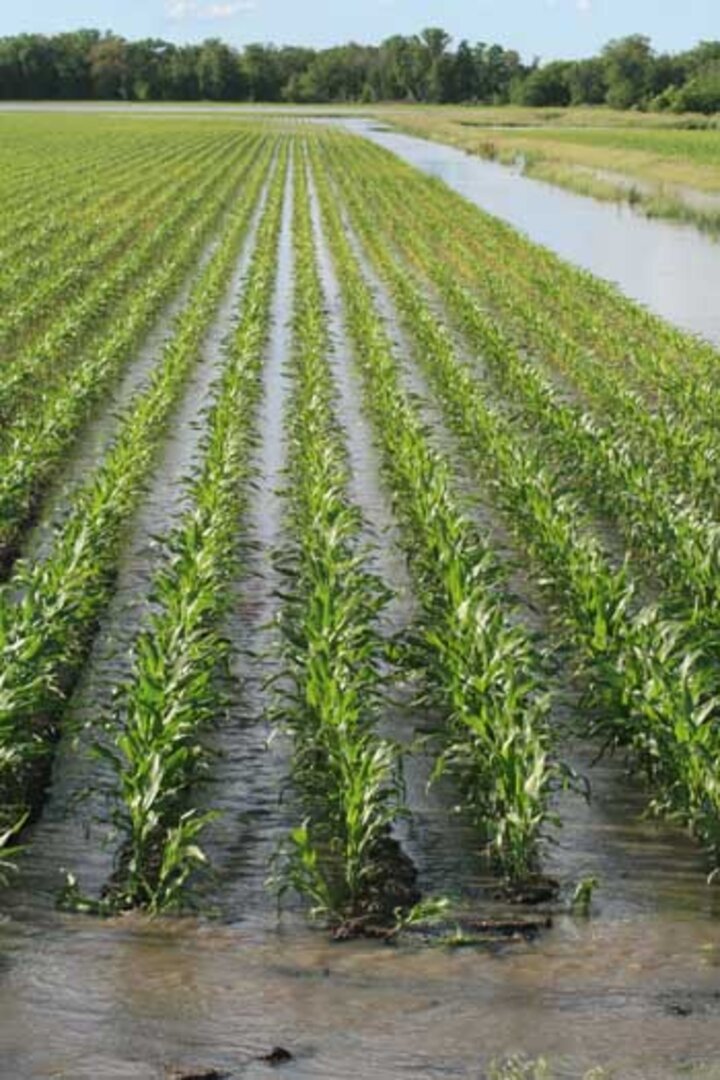A warmer spring may create opportunities and also challenges for agricultural producers in Nebraska. This warming may alter the timing of
- many agricultural processes,
- management decisions,
- pest pressures, and
- growing season length.
Changes in the precipitation pattern will also impact timing and success of management operations and crop growth. Following is a brief list of some of the related impacts and opportunities to row crop production in Nebraska.
Earlier Planting
Planting crops earlier in the year may provide an opportunity to grow a longer-season and potentially higher yielding crop variety; however, there is still the risk of a potential killing frost and an earlier planting date will increase this risk. Currently, the earliest crop insurance planting date in Nebraska is April 10 for the southeastern half and April 15 for the northwestern half for corn, and April 25 for soybeans. See more about these impacts in these CropWatch articles:
Early Weed Growth
Warmer temperatures in the spring will warm soils and could initiate early growth of weeds. This may increase the use of and dependence on early season herbicides, as well as depletion of soil moisture.
Saturated Soils
An increasing precipitation pattern in the spring has many benefits to germination and early crop growth, especially in rainfed fields. This may offset the enhanced evaporation from early season warming and water use from weeds or cover crops. If precipitation is in excess, this may impact germination, plant stands, nutrients, and early growth of your crops by ponding, limited soil oxygen, or other factors association with saturated soils. Well-drained fields may see less of an impact from excess moisture and may see a return to field work sooner than poorly drained fields. For more information see the CropWatch article, Potential N Loss after Heavy Rains.
Cover Crop Growth
An extended growing season may provide an extended window for cover crop growth. The growing season length has often limited the growth of cover crops in Nebraska, which are often used to protect the soil from wind and water erosion, as well as providing many other uses. This extra growth, however, may come at the expense of soil moisture.
Changes in Nebraska's Spring
In this companion article Nebraska State Climatologist Martha Shulski describes short- and long-term trends toward warmer and wetter springs across Nebraska.

Soil Temperatures
Early warming of soils may be beneficial for farmland with heavy surface residue. No-till fields, which often have extra surface residue, may exhibit slow warming in the spring due to this extra surface cover. Early warming may help to warm soils for planting, potentially increasing uniform germination and early season growth. Soil moisture will impact these soil temperatures, in addition to surface residue. For more information see Soil Temperature: A Guide for Planting Agronomic and Horticulture Crops in Nebraska.
Soil Moisture
Early season warming may increase surface evaporation, as well as water use from early season weed and plant growth. Extended warm temperatures in the fall will increase surface evaporation and possibly reduce valuable moisture for crop growth the following spring. The combination of enhanced late season and early season water use could be challenging for water-limited areas; however, the increasing trend in spring precipitation may offset this soil moisture loss.
Pest Growth Pattern
Although early warming may not impact the over-wintering of pests, it may alter the timing of break in dormancy and early growth or maturation. This may increase the vulnerability of some crops to certain pests, but may also minimize other risks. Ultimately, it may change the type of pests we scout for and when.
Field Work
The extended warmth provides more opportunities for field work on thawed ground, although, may increase the risk of fertilizer and soil loss, if field work is conducted earlier in the spring. Tilled or disturbed soil has an increased risk for erosion and extending the period of exposed soil without a cover or growing crop will increase the risk for soil loss. The extra “warm” days could spread out the work load in the field and may better optimize available labor; however, the increasing precipitation trend may decrease the number of days where the field is dry enough for operations.
Freeze Damage
The risk of frost is still evident, even with earlier warming. The potential for over-wintering and perennial crops to break dormancy earlier than normal increases the susceptibility for winter-kill or freeze damage. The urge to plant earlier, and potentially faster early season growth, may also increase the susceptibility of frost damage to cash crops
Conclusion
The list of challenges and opportunities due to a warmer and wetter spring could be extensive, depending on your location, farming system, soil type, etc. Analyzing and understanding the potential opportunities and challenges for your operation can benefit management decisions.

